Post by Caslav Klonimirovic on Oct 12, 2009 3:39:10 GMT -5
Hajduks
Forms of the word in various languages include:
hajduku (Albanian); also hajdut in the ordinary sense of "thief"
հայդուկ (hayduk) (Armenian)
hajduk (Bosnian)
хайдутин or хайдук (haydutin, hayduk) (Bulgarian)
hajduk (Croatian)
haïdouk (French)
aiducco (Italian)
hajdú sing. hajdúk pl. (Hungarian)
ајдук (ajduk) (Macedonian)
hajduk (Polish)
haiduque (Portuguese)
haiduc (Romanian)
хајдук/hajduk (Serbian)
haydut (Turkish)
hejduk (Kurdish)
гайдук (gajduk) (Russian)
гайдамака (haydamaka) (Ukrainian)
הײַדאַמאַק (haydamak) (Yiddish)
In Balkan folkloric tradition, the hajduk (hajduci or haiduci in the plural) is a romanticised hero figure who steals from, and leads his fighters into battle against, the Ottoman oppressors. They are comparable to the English legend of Robin Hood and his merry men, who stole from the rich (which in the case of the hajduci happened to be also foreign occupants) and gave to the poor, while participating in a small guerrilla war against an unjust authority.
In reality, the hajduci of the 17th, 18th and 19th centuries were as much guerrilla fighters against the Ottoman rule as they were bandits and highwaymen who preyed not only on Ottomans and their local representatives, but also on local merchants and travellers. As such, the term could also refer to any robber and carry a negative connotation.[1][2] However, most of the hajduci did follow a moral code which forbade robbing the poor, and motiveless murder.[citation needed]
Etymology
The etymology of the word "hajduk" is unclear. One theory is that hajduk was derived from the Turkish word haiduk or hayduk, which was originally used by the Ottomans to refer to Hungarian infantry soldiers. Another theory suggests that the word comes from the Hungarian hajtó or "hajdó" (plural hajtókor "hajdók"), meaning a (cattle) drover.[3] Indeed, these two theories do not necessarily contradict each other, as the Balkan word is said to be derived from the Turkish word haiduk or hayduk (bandit),[1][2][4] while the Turkish is in turn believed to have been borrowed from Hungarian and to have originally referred to Hungarian mercenaries who guarded the Hungarian-Turkish border.[5] Families of Croatian descent with the same oral traditions of "mountain banditry" use the surname Hidek, a derived form of "hajduk".
Present days some Hungarian families have "Hajdú" as family name referring to the origine of the family.
Hungary
In 1604-1606, István Bocskay, Lord of Bihar, led an insurrection against the Habsburg Emperor, whose army had recently occupied Transylvania and begun a reign of terror. The bulk of Bocskay's army was composed of serfs who had either fled from the war and the Habsburg drive toward Catholic conversion, or been discharged from the Imperial Army. These peasants were known as the hajduk, a term associated in the Hungarian language with the cattle drovers of the Great Plains. As a reward for their service, Bocskay emancipated the hajduk from the jurisdiction of their lords, granted them land, and guaranteed them rights to own property and to personal freedom. The emancipated hajduk constituted a new "warrior estate" within Hungarian feudal society. Many of the settlements created at this time still bear the prefix Hajdú such as Hajdúbagos, Hajdúböszörmény, Hajdúdorog, Hajdúhadház, Hajdúnánás, Hajdúsámson, Hajdúszoboszló, Hajdúszovát, Hajdúvid etc., and the whole area is called Hajdúság (Land of the Hajduk) (see Hajdú County).
Polish-Lithuanian Commonwealth
The word hajduk entered the Polish language from Hungarian in the late 16th century. It was initially a colloquial term for a style of footsoldier, Hungarian or Turco-Balkan in inspiration, that formed the backbone of the Polish infantry arm from the 1570s until about the 1630s. Unusually for this period, Polish-Lithuanian hajduks wore uniforms, typically of grey-blue woollen cloth, with red collar and cuffs. Their principal weapon was a small calibre matchlock firearm, known as an arquebus. For close combat they also carried a heavy variety of sabre, capable of hacking off the heads of enemy pikes and polearms. Contrary to popular opinion, the small axe they often wore tucked in their belt (not to be confused with the huge half-moon shaped berdysz axe, which was seldom carried by hajduks) was not a combat weapon, but rather was intended for cutting wood.
In the mid 17th century hajduk-style infantry largely fell out of fashion in Poland-Lithuania, and were replaced by musket-armed infantry of Western style. However, commanders or hetmans of the Polish-Lithuanian Commonwealth continued to maintain their own liveried bodyguards of hajduks, well into the 18th century as something of a throwback to the past, even though they were now rarely used as field troops. In imitation of these bodyguards, in the 18th century wealthy members of the szlachta hired liveried domestic servants who they called hajduks, thereby creating the meaning of the term 'hajduk' as it is generally understood in modern Polish.(6)
Cultural influence
The Croatian football team HNK Hajduk Split; Serbian football teams Hajduk Kula, FK Hajduk Beograd, FK Hajduk Veljko and Hajduk Lion; the Macedonian football team FK Hajduk - Vratnica; the Romanian band Taraful Haiducilor, pop-music project Haiducii, and Roma musical troupe Taraful Haiducilor are all named after the hajduci. The surnames of the fictional character George Washington Hayduke, invented by Edward Abbey, actress Stacy Haiduk, US National soccer team defender Frankie Hejduk and Milan Hejduk, an NHL hockey player are likewise derived from this word.
The term "haiduci" was used by the Romanian resistance movement Haiducii Muscelului, between 1947 and 1959, which opposed the Soviet occupation and the Communist government.
In academics
In the early 1970s, after the publication of the now classic sociological studies Primitive Rebels and Bandits by historian Eric Hobsbawm, hajduks started appearing in western social and anthropological literature. Hobsbawm invented the term "social bandit" to describe outlaws who operate on the edges of rural societies by fighting against authorities and sometimes helping the ordinary people. There has always been a degree of fluidity in their status, whereby, as described by John Koliopoulos in his study of Greek klephts, Brigands with a Cause, brigands would sometimes change sides and start acting on behalf of the authorities to preserve peace and suppress banditry, and vice-versa.
From the early 1980s, sociological studies started narrating the stories of hajduks, klephts, bandits, brigands, outlaws, rebels, and pirates in all parts of the planet, from Australia to republican China, the Balkans, the American Wild West, Cuba and Mexico.
Notable Hajduks
Albanian
Cerciz Topulli
Armenian
Andranik Ozanian
Arabo
Dro
Garegin Njdeh
Monte Melkonian
Serob Aghpur
Bosnian
Oops don't have any strange that.
Bulgarian
Chavdar Voyvoda
Indzhe Voyvoda
Captain Petko Voyvoda
Angel Voyvoda
Karposh Voyvoda
Ilyo Voyvoda
Kara Kolyo
Hadzhi Dimitar
Postol Voyvoda
Croat
Ivo Senjanin
Mijat Tomiæ
Andrijica Šimiæ
Ivan Bušiæ Roša
Petar Mrkonjiæ
Šimica Karamatiæ
Ilija Perajica/Elia Peraizza
Romanian
Toma Alimoº (legend)
Gruia lui Novac (legend)
Pintea Viteazul (1670-1703)
Iancu Jianu (early 19th century) from Oltenia region, befriended and fought together with freedom fighter Tudor Vladimirescu in the emancipation Revolution of 1821
Andrei Popa (or Andrii Popa)
Gheorghe Magheru
Avram Iancu
Terente Haiducul
Serb
Stari Vujadin
Hajduk Veljko
Hajduk Stanko
Mali Radojica
Starina Novak
Jovo Stanisavljeviæ Èaruga
Stanoje Glavaš
Bajo Pivljanin
Komnen Barjaktar
Pera Tunguz
Golub Babiæ
Draga Mastiloviæ
Petronije Šišo
Petar Popoviæ Pecija
Stojan Èupiæ
Greek
Theodoros Kolokotronis
Geórgios Karaïskákis
Markos Botsaris
Athanasios Diakos
Nikitaras
Odysseas Androutsos
Antonis Katsantonis
Allbanian
Cerciz Topulli
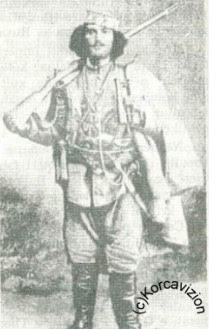
Bulgarian
Ilyo Voyvoda

Hadzhi Dimitar

Captain Petko Voyvoda
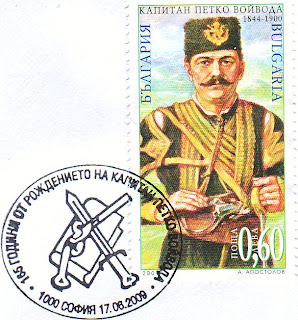
Croat
Ivo Senjanin

Mijat Tomic




Romanian
Toma Alimoº

Gruia lui Novac
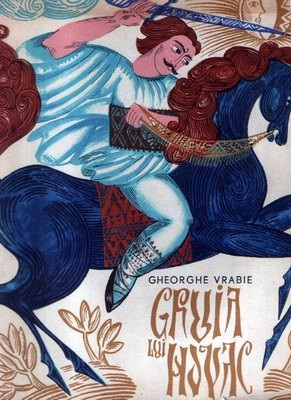
Serb
Hajduk Veljko oPetrovic

Hajduk Stanko
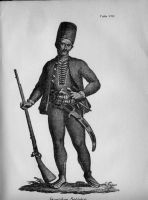



Greek
Theodoros Kolokotronis

Forms of the word in various languages include:
hajduku (Albanian); also hajdut in the ordinary sense of "thief"
հայդուկ (hayduk) (Armenian)
hajduk (Bosnian)
хайдутин or хайдук (haydutin, hayduk) (Bulgarian)
hajduk (Croatian)
haïdouk (French)
aiducco (Italian)
hajdú sing. hajdúk pl. (Hungarian)
ајдук (ajduk) (Macedonian)
hajduk (Polish)
haiduque (Portuguese)
haiduc (Romanian)
хајдук/hajduk (Serbian)
haydut (Turkish)
hejduk (Kurdish)
гайдук (gajduk) (Russian)
гайдамака (haydamaka) (Ukrainian)
הײַדאַמאַק (haydamak) (Yiddish)
In Balkan folkloric tradition, the hajduk (hajduci or haiduci in the plural) is a romanticised hero figure who steals from, and leads his fighters into battle against, the Ottoman oppressors. They are comparable to the English legend of Robin Hood and his merry men, who stole from the rich (which in the case of the hajduci happened to be also foreign occupants) and gave to the poor, while participating in a small guerrilla war against an unjust authority.
In reality, the hajduci of the 17th, 18th and 19th centuries were as much guerrilla fighters against the Ottoman rule as they were bandits and highwaymen who preyed not only on Ottomans and their local representatives, but also on local merchants and travellers. As such, the term could also refer to any robber and carry a negative connotation.[1][2] However, most of the hajduci did follow a moral code which forbade robbing the poor, and motiveless murder.[citation needed]
Etymology
The etymology of the word "hajduk" is unclear. One theory is that hajduk was derived from the Turkish word haiduk or hayduk, which was originally used by the Ottomans to refer to Hungarian infantry soldiers. Another theory suggests that the word comes from the Hungarian hajtó or "hajdó" (plural hajtókor "hajdók"), meaning a (cattle) drover.[3] Indeed, these two theories do not necessarily contradict each other, as the Balkan word is said to be derived from the Turkish word haiduk or hayduk (bandit),[1][2][4] while the Turkish is in turn believed to have been borrowed from Hungarian and to have originally referred to Hungarian mercenaries who guarded the Hungarian-Turkish border.[5] Families of Croatian descent with the same oral traditions of "mountain banditry" use the surname Hidek, a derived form of "hajduk".
Present days some Hungarian families have "Hajdú" as family name referring to the origine of the family.
Hungary
In 1604-1606, István Bocskay, Lord of Bihar, led an insurrection against the Habsburg Emperor, whose army had recently occupied Transylvania and begun a reign of terror. The bulk of Bocskay's army was composed of serfs who had either fled from the war and the Habsburg drive toward Catholic conversion, or been discharged from the Imperial Army. These peasants were known as the hajduk, a term associated in the Hungarian language with the cattle drovers of the Great Plains. As a reward for their service, Bocskay emancipated the hajduk from the jurisdiction of their lords, granted them land, and guaranteed them rights to own property and to personal freedom. The emancipated hajduk constituted a new "warrior estate" within Hungarian feudal society. Many of the settlements created at this time still bear the prefix Hajdú such as Hajdúbagos, Hajdúböszörmény, Hajdúdorog, Hajdúhadház, Hajdúnánás, Hajdúsámson, Hajdúszoboszló, Hajdúszovát, Hajdúvid etc., and the whole area is called Hajdúság (Land of the Hajduk) (see Hajdú County).
Polish-Lithuanian Commonwealth
The word hajduk entered the Polish language from Hungarian in the late 16th century. It was initially a colloquial term for a style of footsoldier, Hungarian or Turco-Balkan in inspiration, that formed the backbone of the Polish infantry arm from the 1570s until about the 1630s. Unusually for this period, Polish-Lithuanian hajduks wore uniforms, typically of grey-blue woollen cloth, with red collar and cuffs. Their principal weapon was a small calibre matchlock firearm, known as an arquebus. For close combat they also carried a heavy variety of sabre, capable of hacking off the heads of enemy pikes and polearms. Contrary to popular opinion, the small axe they often wore tucked in their belt (not to be confused with the huge half-moon shaped berdysz axe, which was seldom carried by hajduks) was not a combat weapon, but rather was intended for cutting wood.
In the mid 17th century hajduk-style infantry largely fell out of fashion in Poland-Lithuania, and were replaced by musket-armed infantry of Western style. However, commanders or hetmans of the Polish-Lithuanian Commonwealth continued to maintain their own liveried bodyguards of hajduks, well into the 18th century as something of a throwback to the past, even though they were now rarely used as field troops. In imitation of these bodyguards, in the 18th century wealthy members of the szlachta hired liveried domestic servants who they called hajduks, thereby creating the meaning of the term 'hajduk' as it is generally understood in modern Polish.(6)
Cultural influence
The Croatian football team HNK Hajduk Split; Serbian football teams Hajduk Kula, FK Hajduk Beograd, FK Hajduk Veljko and Hajduk Lion; the Macedonian football team FK Hajduk - Vratnica; the Romanian band Taraful Haiducilor, pop-music project Haiducii, and Roma musical troupe Taraful Haiducilor are all named after the hajduci. The surnames of the fictional character George Washington Hayduke, invented by Edward Abbey, actress Stacy Haiduk, US National soccer team defender Frankie Hejduk and Milan Hejduk, an NHL hockey player are likewise derived from this word.
The term "haiduci" was used by the Romanian resistance movement Haiducii Muscelului, between 1947 and 1959, which opposed the Soviet occupation and the Communist government.
In academics
In the early 1970s, after the publication of the now classic sociological studies Primitive Rebels and Bandits by historian Eric Hobsbawm, hajduks started appearing in western social and anthropological literature. Hobsbawm invented the term "social bandit" to describe outlaws who operate on the edges of rural societies by fighting against authorities and sometimes helping the ordinary people. There has always been a degree of fluidity in their status, whereby, as described by John Koliopoulos in his study of Greek klephts, Brigands with a Cause, brigands would sometimes change sides and start acting on behalf of the authorities to preserve peace and suppress banditry, and vice-versa.
From the early 1980s, sociological studies started narrating the stories of hajduks, klephts, bandits, brigands, outlaws, rebels, and pirates in all parts of the planet, from Australia to republican China, the Balkans, the American Wild West, Cuba and Mexico.
Notable Hajduks
Albanian
Cerciz Topulli
Armenian
Andranik Ozanian
Arabo
Dro
Garegin Njdeh
Monte Melkonian
Serob Aghpur
Bosnian
Oops don't have any strange that.

Bulgarian
Chavdar Voyvoda
Indzhe Voyvoda
Captain Petko Voyvoda
Angel Voyvoda
Karposh Voyvoda
Ilyo Voyvoda
Kara Kolyo
Hadzhi Dimitar
Postol Voyvoda
Croat
Ivo Senjanin
Mijat Tomiæ
Andrijica Šimiæ
Ivan Bušiæ Roša
Petar Mrkonjiæ
Šimica Karamatiæ
Ilija Perajica/Elia Peraizza
Romanian
Toma Alimoº (legend)
Gruia lui Novac (legend)
Pintea Viteazul (1670-1703)
Iancu Jianu (early 19th century) from Oltenia region, befriended and fought together with freedom fighter Tudor Vladimirescu in the emancipation Revolution of 1821
Andrei Popa (or Andrii Popa)
Gheorghe Magheru
Avram Iancu
Terente Haiducul
Serb
Stari Vujadin
Hajduk Veljko
Hajduk Stanko
Mali Radojica
Starina Novak
Jovo Stanisavljeviæ Èaruga
Stanoje Glavaš
Bajo Pivljanin
Komnen Barjaktar
Pera Tunguz
Golub Babiæ
Draga Mastiloviæ
Petronije Šišo
Petar Popoviæ Pecija
Stojan Èupiæ
Greek
Theodoros Kolokotronis
Geórgios Karaïskákis
Markos Botsaris
Athanasios Diakos
Nikitaras
Odysseas Androutsos
Antonis Katsantonis
Allbanian
Cerciz Topulli

Bulgarian
Ilyo Voyvoda

Hadzhi Dimitar

Captain Petko Voyvoda

Croat
Ivo Senjanin

Mijat Tomic




Romanian
Toma Alimoº

Gruia lui Novac

Serb
Hajduk Veljko oPetrovic

Hajduk Stanko




Greek
Theodoros Kolokotronis


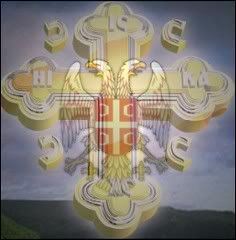


 intro...
intro...